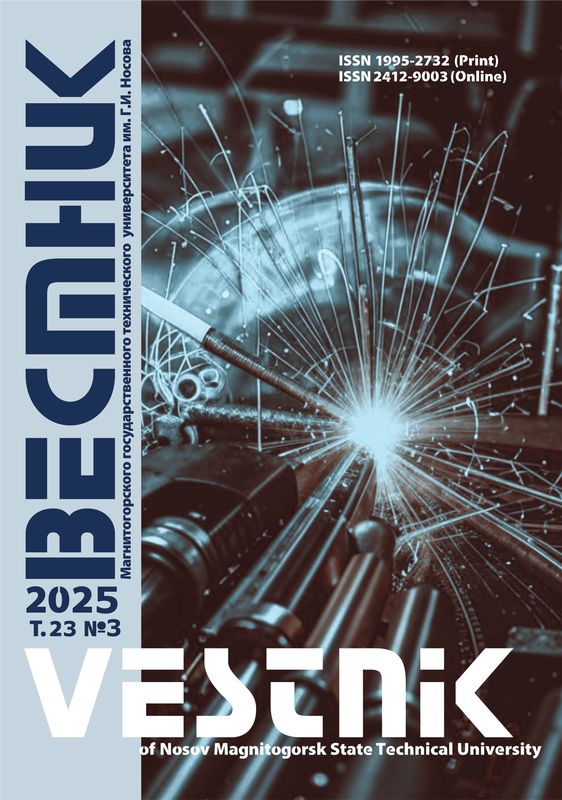DOI: 10.18503/1995-2732-2023-21-1-74-81
Abstract
Relevance. Today, quite high quality requirements are imposed on mass-produced products. To exercise operational control of the technological process, when manufacturing products, it is necessary to receive objective information timely. However, now this is a certain problem that arises due to the fact that it is necessary to take into account a sufficiently large number of factors that lead to causes of loss of product quality. Thus, there is a current need for modern methods that can solve this problem. Objectives. Within the framework of this study, the authors aim to analyze the features of the use of hierarchical neural networks to assess the quality of products. Methods Applied. The article describes general scientific and mathematical analysis methods, primarily approaches and methods of a system analysis and a general theory of systems, analysis and synthesis, as well as comparisons and generalizations. The presented methods made it possible to conduct a critical analysis of the points of view on the peculiarities of the use of hierarchical neural network methods in quality control. Originality. The article presents the authors’ analysis of the application of hierarchical neural network methods for product quality control. Result. Quality management of mass-produced products using hierarchical neural networks seems to be efficient, which is proved today by a number of studies. This method is used today in various fields of activity, including mechanical engineering. The article contains the conclusions drawn about the possibilities of the neural network method, its advantages and disadvantages. Practical Relevance. The results of the study can be used by enterprises for quality control of manufactured products.
Keywords
product quality, hierarchical neural networks, neuron, automation, perceptron
For citation
Prytkova E.A., Davydov V.M. Analysis of the Use of Hierarchical Neural Network Methods in Quality Control. Vestnik Magnitogorskogo Gosudarstvennogo Tekhnicheskogo Universiteta im. G.I. Nosova [Vestnik of Nosov Magnitogorsk State Technical University]. 2023, vol. 21, no. 1, pp. 74-81. https://doi.org/10.18503/1995-2732-2023-21-1-74-81
1. Grzegorz Kłosowski, Jerzy Lipski. The use of transfer learning with very deep convolutional neural network in quality management. Available at: https://www.researchgate.net/publication/352441525.
2. Tian Wang, Yang Chen, Meina Qiao, Hichem Snoussi. A fast and robust convolutional neural network-based defect detection model in product quality control. The International Journal of Advanced Manufacturing Technology. 2018;94:3465-3471.
3. Lankin J.P., Baskanova T.F. Algorithms of self-adaptation for atmospheric model designing. SPIE. 2004;5397:260-270.
4. Baskanova T.F., Lankin Yu.P., Komissarov S.V. Hierarchical neural networks as a means of solving difficult-to-formalize tasks of artificial intelligence. Iskusstvenny intellekt [Artificial Intelligence]. 2009;(1):100-111. (In Russ.)
5. Vsemirnaya O.S., Shikhanov K.A., Samoilova E.M. Intelligent analysis of the surface quality of parts using the neural network method of multilayer perceptron. Innovative Potential of Development of Science in the Modern World: Achievement and Innovations. Collection of Articles Based on the Proceedings of the 1st International Scientific and Practical Conference. Ufa; 2019;25-29. (In Russ.)
6. Davydov V.M., Kuznetsov D.I. Neural network cluster analysis of parts in CAD. Vestnik kompyuternykh i informatsionnykh tekhnologii [Bulletin of Computer and Information Technologies]. 2004;(2):43-46. (In Russ.)
7. Davydov V.M., Shlapakov S.I., Krivosheev I.A. On the structure of neural networks in image recognition systems. Proektirovanie tekhnologicheskikh mashin: Sbornik nauchnykh trudov. Vypusk 15 [Designing Technological Machines: Collection of Scientific Papers. Issue 15]. Moscow: STANKIN Moscow State University of Technology; 1999;25-30. (In Russ.)
8. Demkin V.A. Fundamentals of neural network fore-casting methods. Nauka i mir [Science and World]. 2018;(4-1(56)):36-39. (In Russ.)
9. Luneva E.A. Artificial neural networks. Neural network training methods. Intelligent Information Systems: Trends, Problems, Prospects. Proceedings of the 6th All-Russian Offline Scientific and Practical Conference IIS -2018. Kursk: Southwest State University; 2018;99-101. (In Russ.)
10. Ponomareva K.A. Application of artificial neural networks in solving forecasting problems. Nauka bez granits [Science Without Borders]. 2020;(1(41)):42-47. (In Russ.)
11. Rozhkov I.A., Ivashchenko V.A. Identification of defects in the surface layer of bearing parts using an artificial neural network. Proceedings of the All-Russian Scientific and Practical Conference of Young Scientists. Saratov; 2018;1:72-74. (In Russ.)
12. Ruchai A.N. New development of society: neural networks and artificial intelligence. Scientific Paradigm of the Civilization in the 21st Century: Capitalism, Socialism and the Fourth Technological Revolution. Collection of Papers of the Tenth International Congress of Advanced Sciences. Chelyabinsk; 2018;75. (In Russ.)
13. Cherepanov F.M. Methods of increasing efficiency of neural network systems in limited sample volumes with complicated correlations. Prikladnaya matematika i voprosy upravleniya [Applied Mathematics and Management Issues]. 2019;(2):40-61. (In Russ.)
14. Yamashkin S.A. Designing neural network models by visual programming methods. Izvestiya vysshikh uchebnykh zavedenii. Povolzhskii region. Tekhnicheskie nauki [News of Higher Educational Institutions. Volga Region. Engineering Sciences]. 2021;(3(59)):14-24. (In Russ.)












